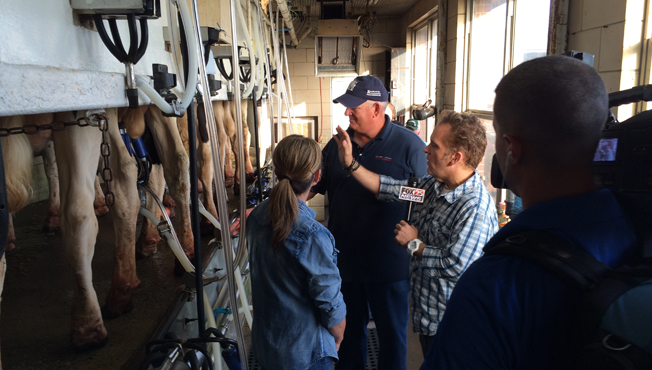From Albuquerque, N.M., to Houston, Texas. — and everywhere in between — Dairy MAX’s, media efforts have reached more than 222 million consumers throughout 2015.
Millions of Americans are enjoying dairy foods because of their great taste and nutritional benefits. But, these same consumers don’t necessarily feel connected or educated about the people behind the products or proactively speak about dairy’s many benefits.
Dairy MAX’s media outreach plan is making a positive impression among consumers of all ages. Throughout 2015, more than 222 million consumers saw dairy on television, heard about dairy on the radio, read about dairy in the news or saw a dairy story online. These stories featured a variety of positive dairy messaging and directed the audience to Dairy MAX websites for more information on dairy farming, dairy foods and ways to incorporate dairy into a healthy diet and lifestyle.
Media messaging was focused on three key areas: dairy’s nutritional role in the diet, Fuel Up to Play 60 and dairy image through the Our Land, Our Cows, Our Passion™ program. “Dairy MAX communicators actively work with local media outlets through monthly pitching, event based media with school programs and larger scale satellite tours,” said Sara Robbins, Dairy MAX director of Health and Wellness. “Not only does our staff serve as spokespeople, consumers also heard from dairy farmers and our distinguished Health and Wellness Advisory Council,” said Robbins.
This year’s featured satellite tour in March, Dairy MAX answered consumer’s questions about dairy foods by taking the milk alternatives discussion to the farm. This nationwide satellite media tour at Full Circle Jerseys in Dalhart, Texas featured country musician Sara Evans and Dr. Lana Frantzen, vice-president of Health and Wellness for Dairy MAX. They conducted 35 media interviews about dairy nutrition compared to alternatives. The positive dairy message reached more than 47 million viewers.
During the interviews, Frantzen and Evans shared three messages with consumers:
- Dairy farmers are hardworking men, women and families. Ninety-eight percent of farms in the United States are family owned and operated.
- Not all “milks” are created equal. In fact, real cow’s milk has a unique nutrient package that can’t be matched.
- Lactose intolerance does not mean you have to avoid dairy.
In 2015, most of Dairy MAX’s impressions came from almost 150 interviews. By utilizing our current strategy, we are able to place the interviews as news or feature stories. This placed media would have cost almost $300,000 if that time had been purchased in advertising.
In 2016, Dairy MAX will continue using the same three-tiered strategy with the addition of a monthly video news release. The video news release will be available to every media outlet throughout the Dairy MAX region.
Marty McKinzie, vice president of Industry Image and Relations, said the video news releases will now allow for Dairy MAX to broaden its reach by bringing communications efforts from big cities to smaller, rural areas.
“With a region of our size, and the growing importance of visual communications the addition of the video news releases will allow us to provide the media and influencers more dairy stories," stated McKinzie.




